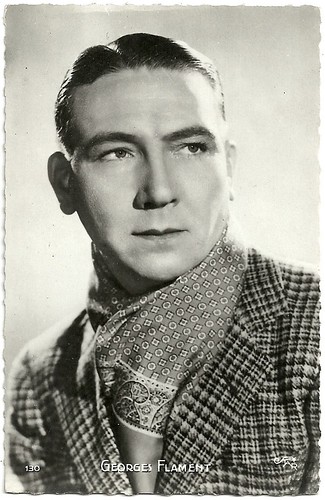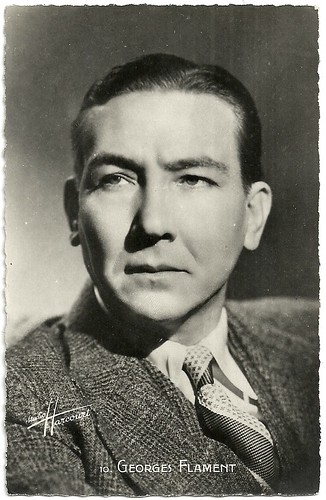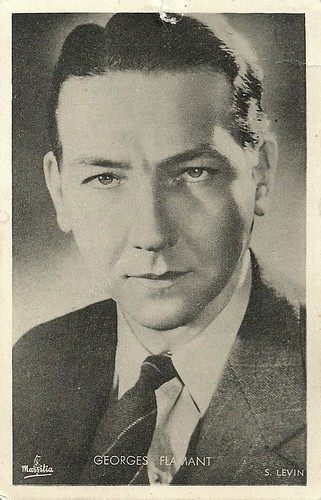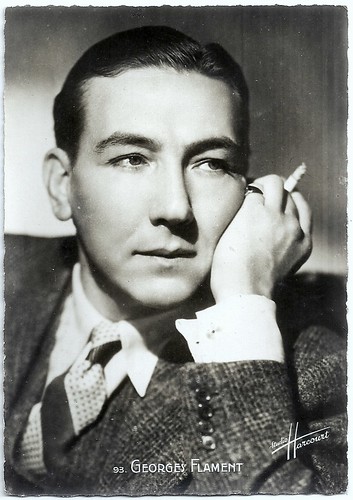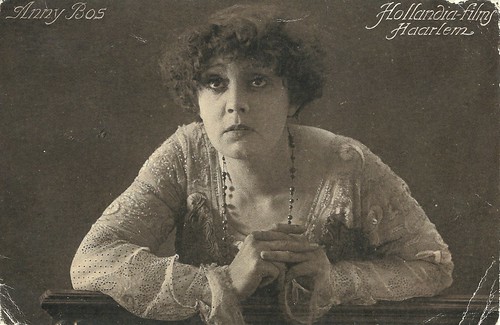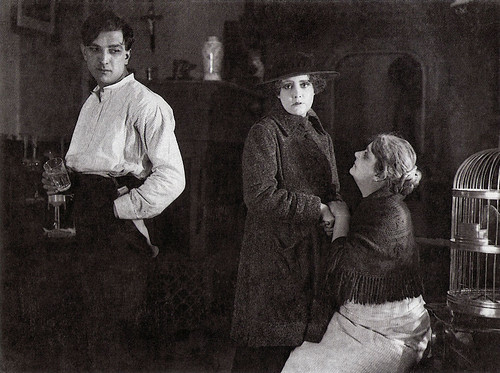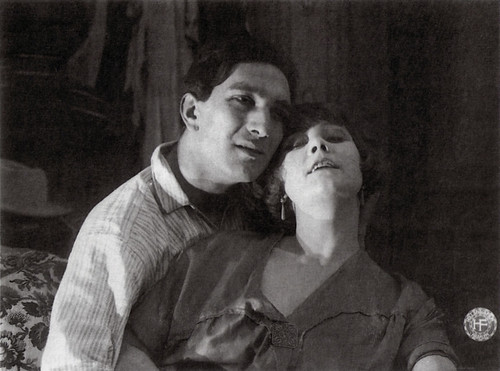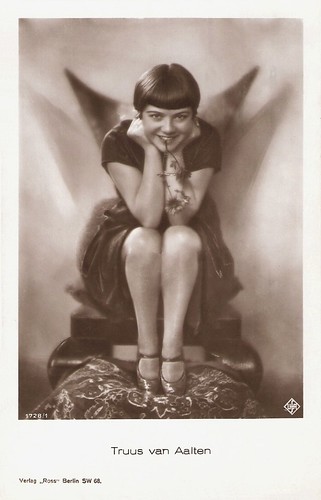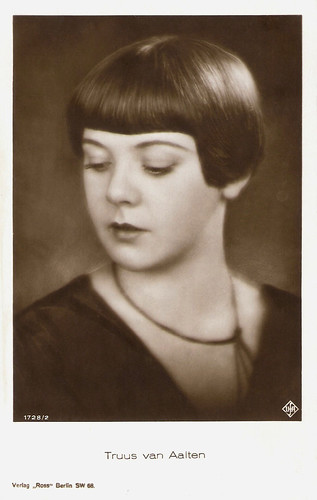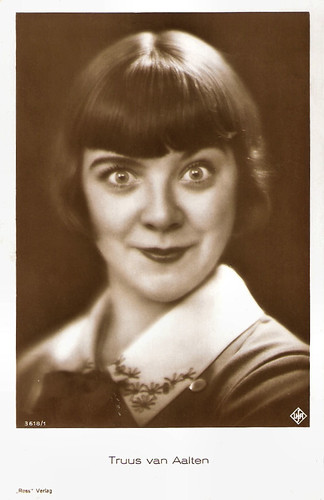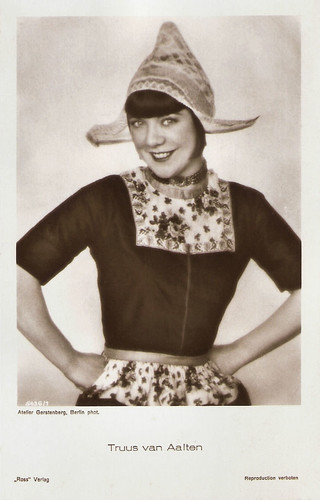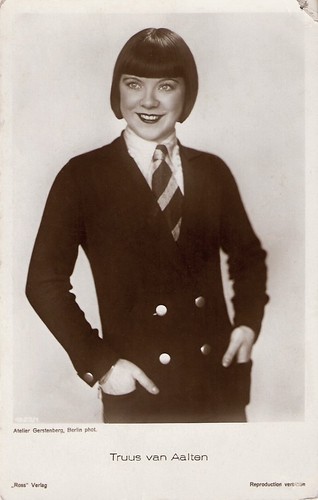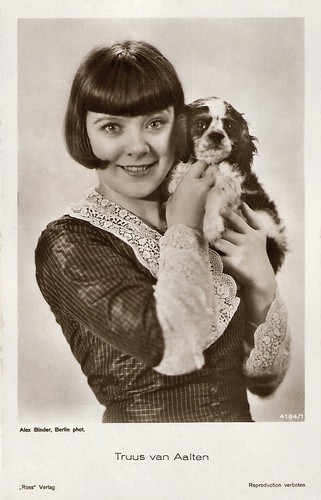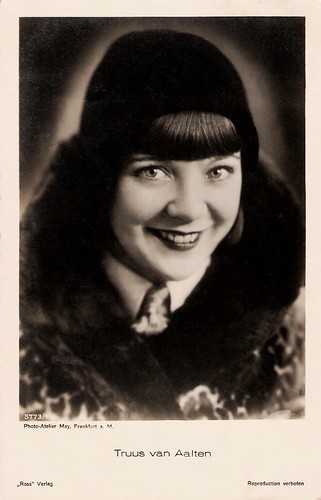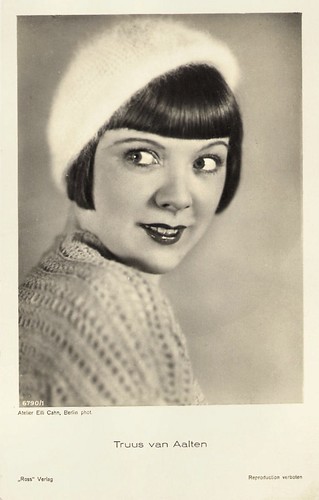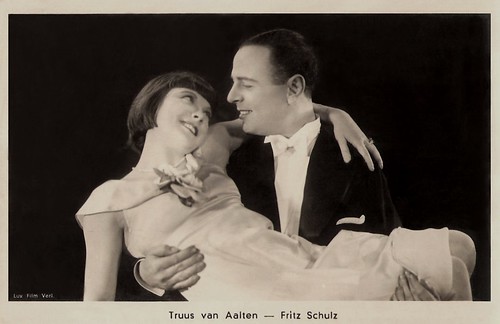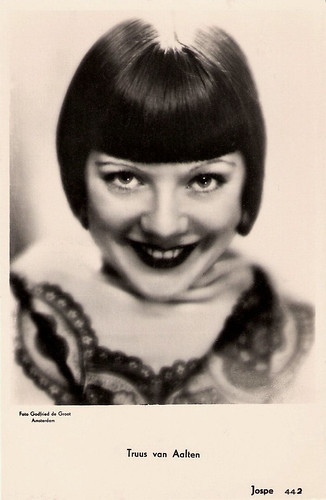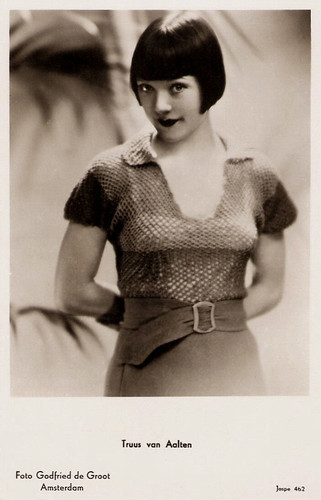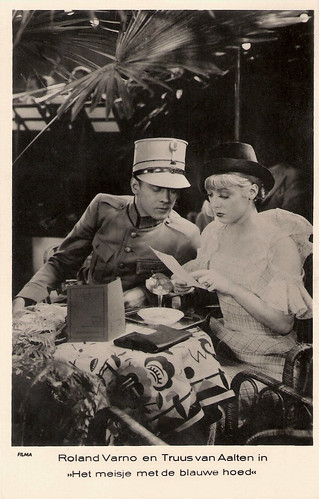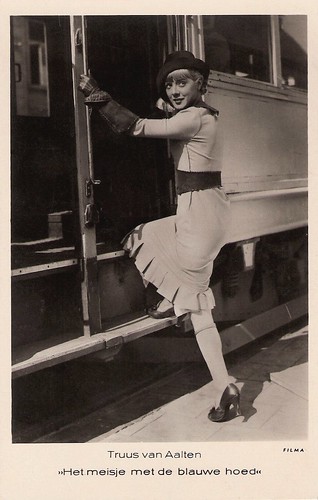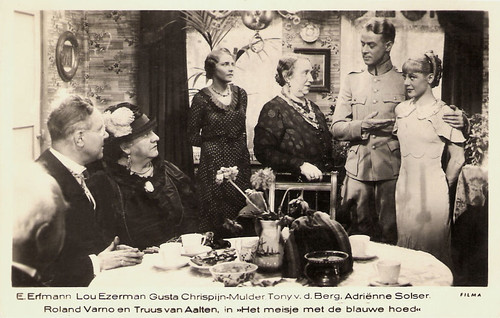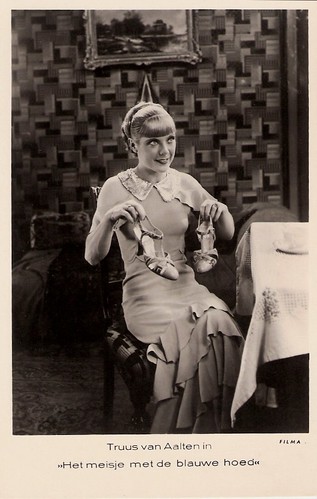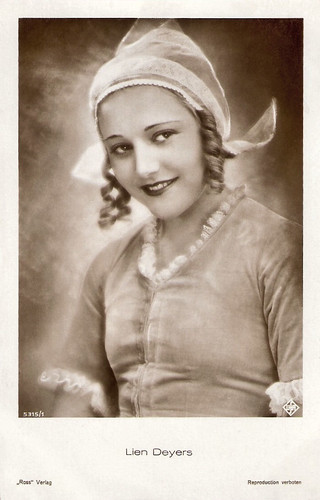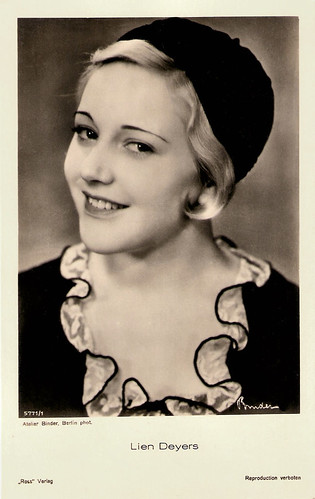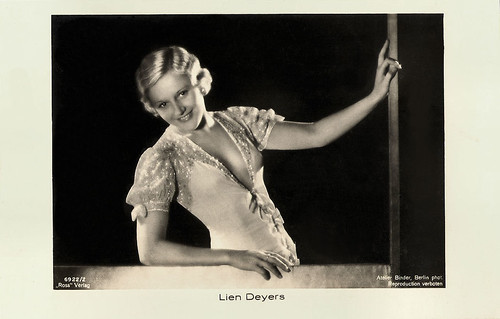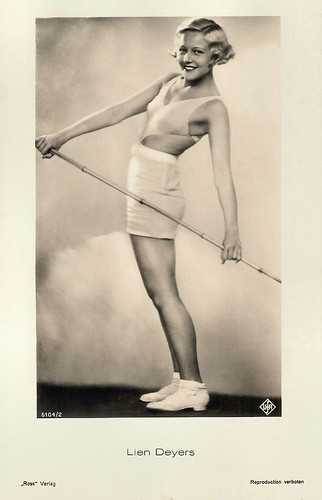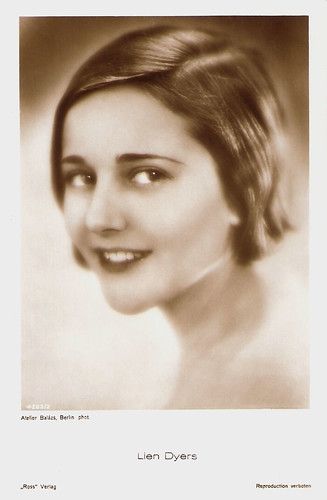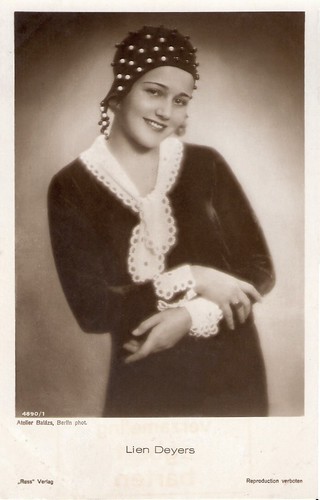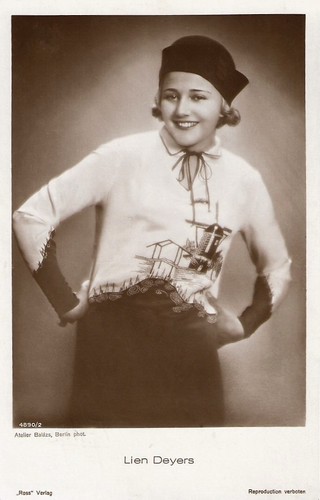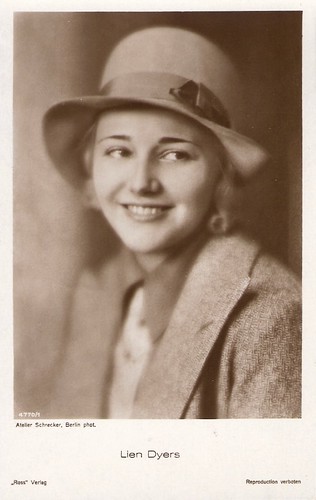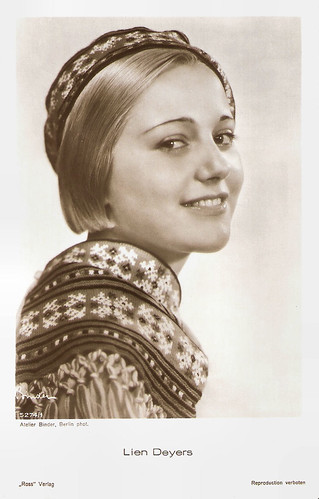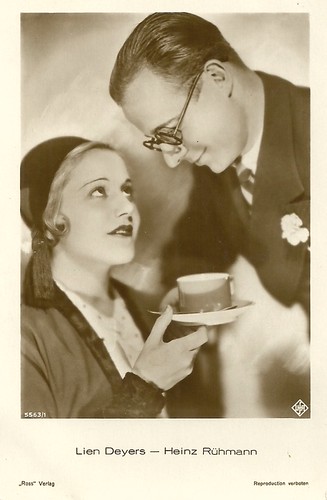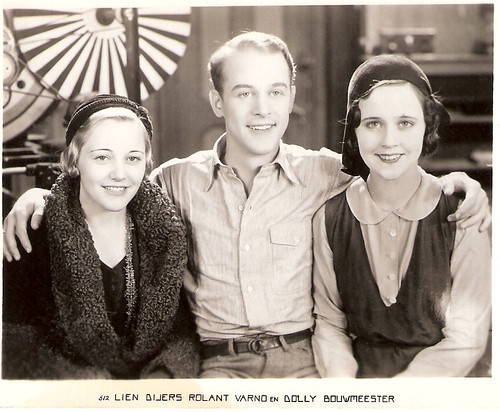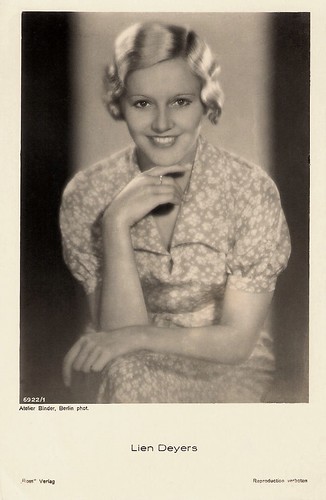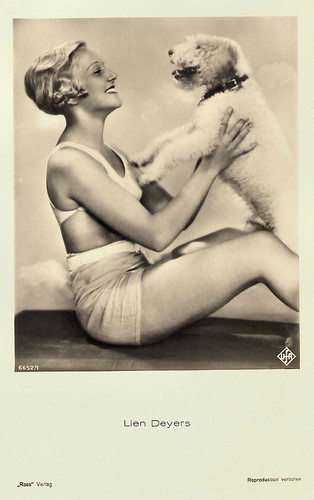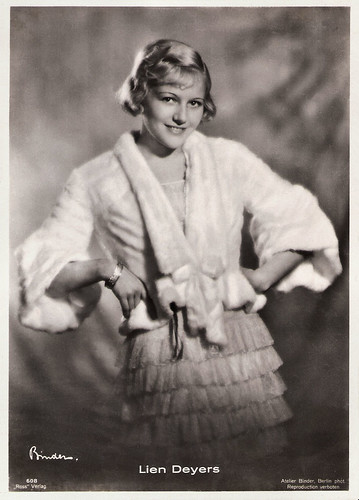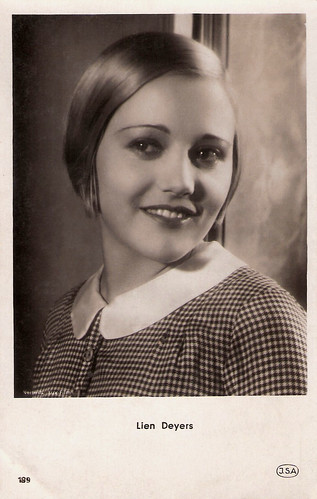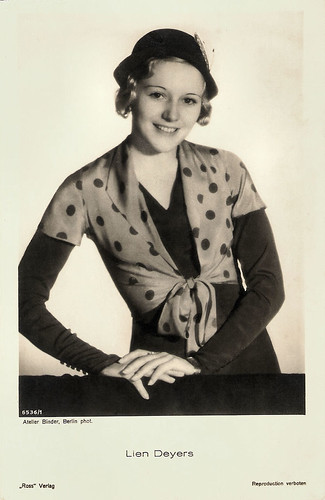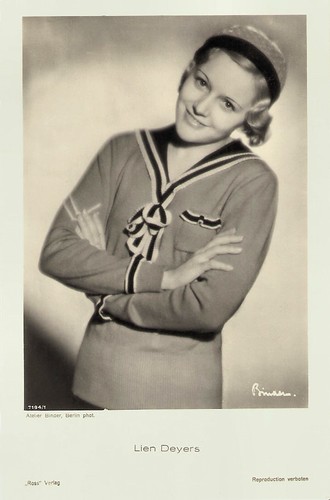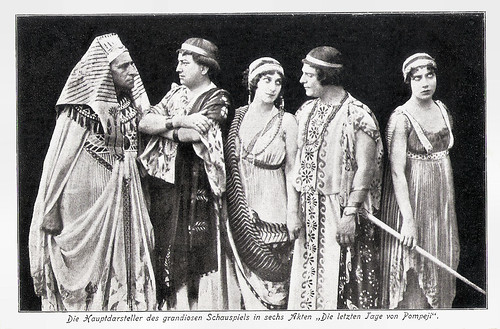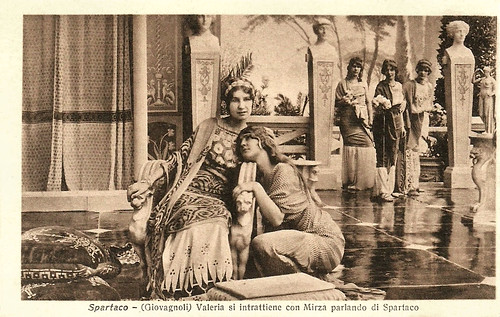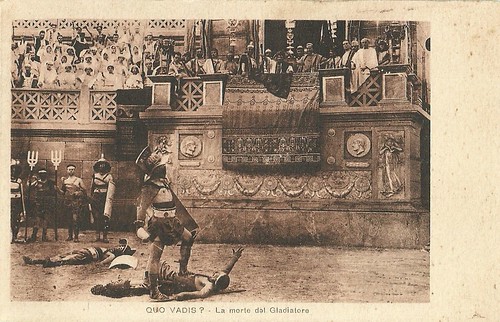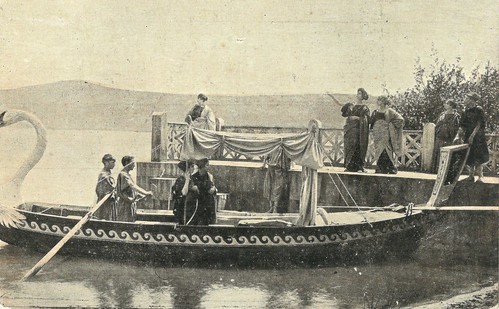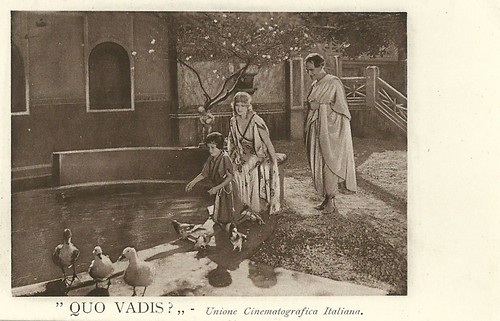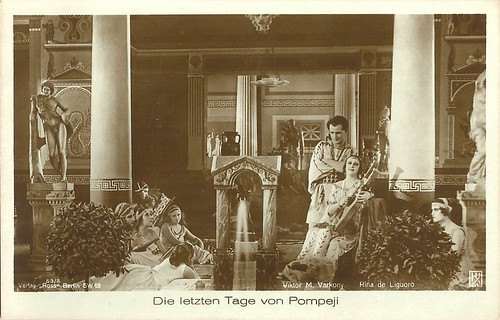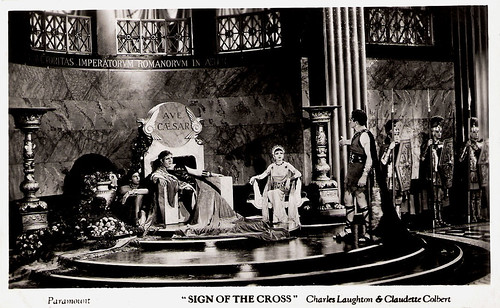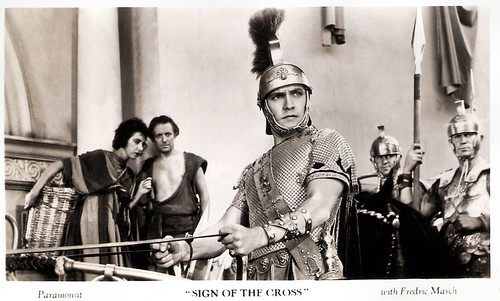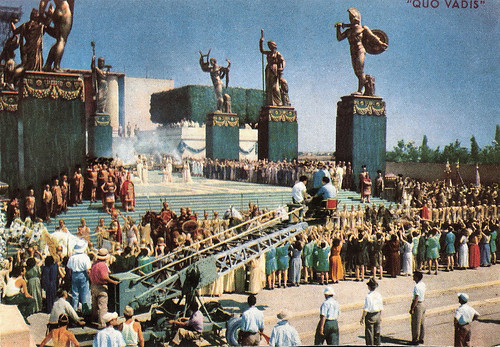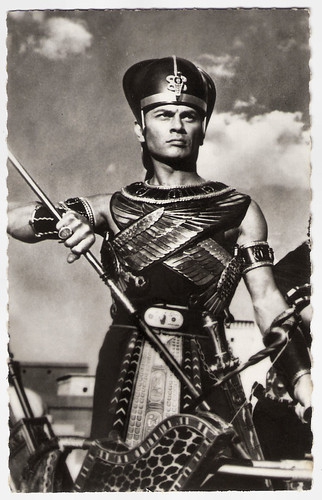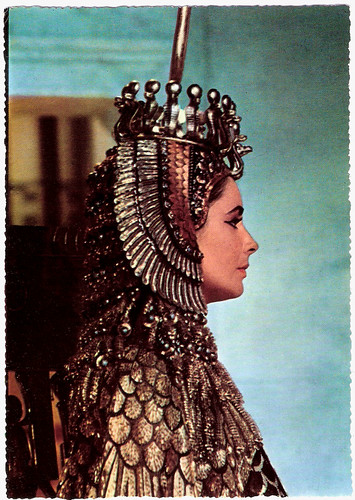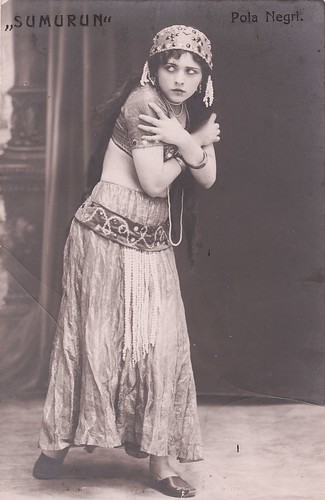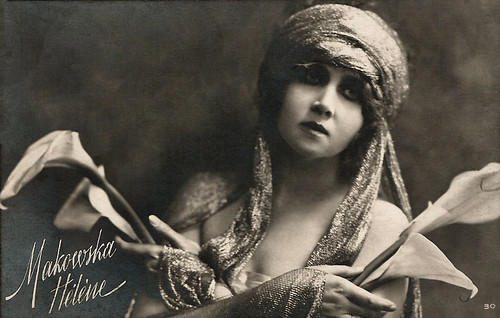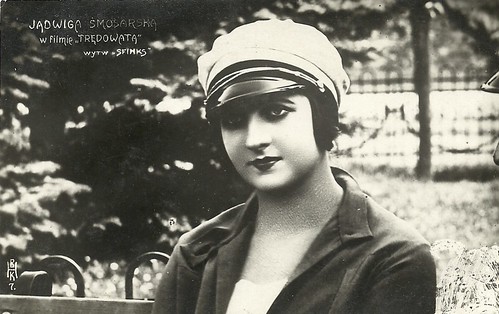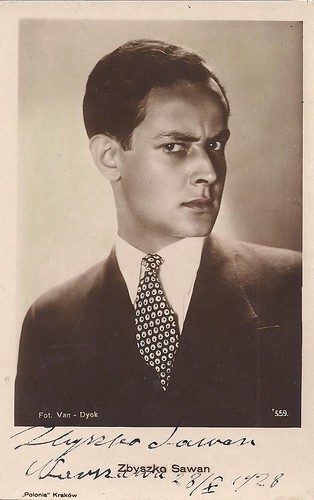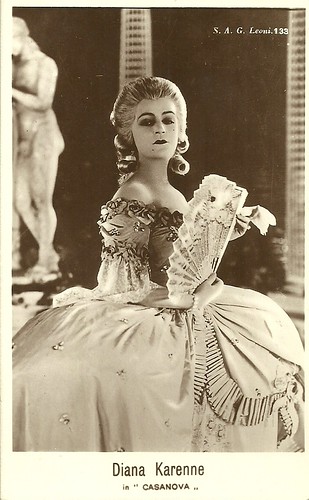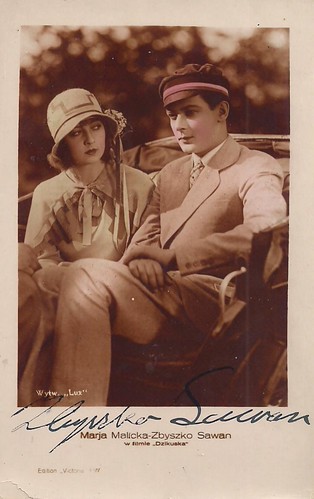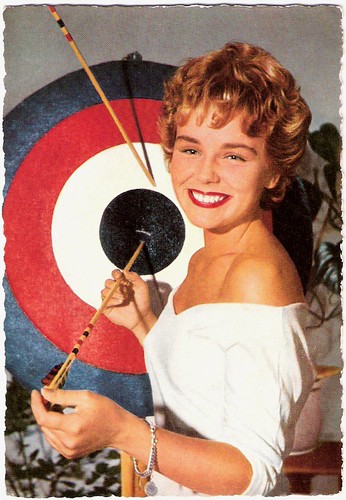We've got mail again from Spain! This time, Didier Hanson sent us scans of interesting rare vintage postcards of the Russian Empire of Vera Karalli and , but also great Ross postcards of Polish Hollywood legend Pola Negri. My favourite is the French postcard of the classic Alraune/Mandrake (1928). Didier also sent us postcards of Leopoldine Konstantin, Jarmila Novotná and Siegfried Arno, stars of the Weimar cinema who had to emigrate from Germany when the Nazis rose to power. We'll do individual posts about these interesting, but little known actors in the next weeks.
![Feodor Chaliapin in Mephisto]()
Russian postcard, no. 521. Photo: K. Fisher. Publicity still for the stage production of Mefistofele. Feodor Ivanovich Chaliapin sang the title role on the occasion of his first appearance outside Russia at La Scala, Milan in 1901 and also on his North American debut at the Metropolitan Opera, New York, in 1907. Collection: Didier Hanson.
![Feodor Chaliapin in Mephisto]()
Russian postcard, no. 527. Photo: K. Fisher. Publicity still for the stage production of Arrigo Boito's opera Mefistofele. Collection: Didier Hanson.
Feodor Ivanovich Chaliapin (Russian: Фёдор Ива́нович Шаля́пин) (1873–1938) was a Russian opera singer. The possessor of a large, deep and expressive bass voice, he enjoyed an important international career at major opera houses and is often credited with establishing the tradition of naturalistic acting in his chosen art form. The only sound film which shows his acting style is Don Quixote (Georg Wilhelm Pabst, 1933).
![Leopoldine Konstantin in Sumurûn (1910)]()
German postcard by Verlag Hermann Leiser, no. 4310. Photo: Becker & Maass. Collection: Didier Hanson. The photo was a publicity still for Sumurûn (Max Reinhardt, 1910).
Leopoldine Konstantin (1886-1965) was a famous Austrian theatre and film character actress, who worked for years with director Max Reinhardt. She played Claude Rains' dominant mother in Alfred Hitchcock’s classic Notorious (1946). It was her sole Hollywood role.
![Vera Karalli in Eunice and Petronius]()
Russian postcard, 1916. Collection: Didier Hanson. Eunice and Petronius (1915) was a ballet by chroreographer Alexander Alexeyevich Gorsky, produced by the Russian Imperial Ballet.
Vera Karalli (1889-1972) was a Russian ballet dancer, choreographer and actress in the early 20th century.
![Jane Danjou]()
French postcard by A. Bert, Paris, no. 16. Collection: Didier Hanson.
Pretty performer Jane Danjou is known for a few French silent films. She played small parts in the shorts L'auberge du tohu-bohu/The Inn of Tohu-Bohu (Georges Denola, 1912) and C'est pour les orphelins/For the Children (Louis Feuillade, 1916) with Musidora. She played the female lead in Midinettes/ (René Hervil, Louis Mercanton, 1917), and the tile role in Zon (Robert Boudrioz, 1920) opposite Jacques de Féraudy.
![Leopoldine Konstantin]()
German postcard by Photochemie, Berlin, no. K. 114. Photo: Alex Binder, Berlin. Collection: Didier Hanson.
Leopoldine Konstantin (1886-1965) was a famous Austrian theatre and film character actress, who worked for years with director Max Reinhardt. She played Claude Rains' dominant mother in Alfred Hitchcock’s classic Notorious (1946). It was her sole Hollywood role.
![Georges Lannes]()
French postcard by Editions Cinémagazine no. 38. Photo: G. Fontaine. Collection: Didier Hanson.
Georges Lannes (1895–1983) was a French film actor who appeared in more than a hundred films during his career (1920-1961). In 1920-1922 he acted in ten films by Charles Maudru, starting with Près des cimes (1920) and Le Droit de tuer (1920), and including the Zola adaptation L'Assommoir (1921), in which Lannes played Lantier, the young, lazy worker, who abandons his wife Gervaise (Louise Sforza) and their two children. His co-actors with Maudru were e.g. Gaston Jacquet and Suzanne Delvé.
![Pola Negri in Hotel Imperial (1927)]()
German postcard by Ross Verlag, Berlin, no. 72/2. Photo: Parufamet / Paramount. Publicity still for Hotel Imperial (Mauritz Stiller, 1927). Collection: Didier Hanson.
![Pola Negri and James Hall in Hotel Imperial (1927)]()
German postcard by Ross Verlag, Berlin, no. 72/3. Photo: Parufamet / Paramount. Publicity still for Hotel Imperial (Mauritz Stiller, 1927) with Pola Negri and James Hall. Collection: Didier Hanson.
Polish film actress Pola Negri (1894-1987) achieved notoriety as a femme fatale in silent films between 1910s and 1930s.
![Paul Wegener and Brigitte Helm in Alraune (1928)]()
French postcard by CE, no. 613. Photo: publicity still for Alraune/Mandrake (Henrik Galeen, 1928). Collection: Didier Hanson.
German actor, writer and film director Paul Wegener (1874-1948) is one of the true fathers of the horror and fantasy genre, particularly remembered for his three silent films centred around the Jewish legend of the Golem. Wegener was one of the pioneers of the German cinema who realized the potential of the new medium and used the possibilities of cinematic trick photography as a method for presenting fantastic tales in a serious matter.
German actress Brigitte Helm (1908-1996) is still famous for her dual role as Maria and her double the evil Maria, the Maschinenmensch, in the silent SF classic Metropolis (Fritz Lang, 1927). After Metropolis she made a string of over 30 films in which she almost always had the starring role. She easily made the transition to sound films, before she abruptly retired in 1935.
![Siegfried Arno]()
German postcard by Ross Verlag, no. 24/1. Photo: Ufa / Ama-Film. Collection: Didier Hanson.
Siegfried - or Sig - Arno (1895-1975) was regularly being referred to as the ‘German Charlie Chaplin’. The German-Jewish character actor appeared in ninety silent and early sound films before he had to flee Nazi-Germany. From 1939 on, he appeared as a supporting actor in over 50 Hollywood films, often as the ‘funny European’. He may be best remembered from The Palm Beach Story (Preston Sturges, 1942) as Toto, the nonsense-talking mustachioed man who hopelessly pursues Mary Astor's ‘Princess Centimillia’.
![Jarmila Novotná]()
German postcard by Ross Verlag, no. 8811/1, 1933-1934. Photo: Atlantis-Film. Collection: Didier Hanson.
Czech soprano Jarmila Novotná (1907-1994) was one of the world-renowned opera luminaries of the 20th Century. Her film appearances were unfortunately few and far between.
Thanks, Didier!
This is a post for Postcard Friendship Friday, hosted by Beth at the The Best Hearts are Crunchy. You can visit her by clicking on the button below.
![]()

Russian postcard, no. 521. Photo: K. Fisher. Publicity still for the stage production of Mefistofele. Feodor Ivanovich Chaliapin sang the title role on the occasion of his first appearance outside Russia at La Scala, Milan in 1901 and also on his North American debut at the Metropolitan Opera, New York, in 1907. Collection: Didier Hanson.

Russian postcard, no. 527. Photo: K. Fisher. Publicity still for the stage production of Arrigo Boito's opera Mefistofele. Collection: Didier Hanson.
Feodor Ivanovich Chaliapin (Russian: Фёдор Ива́нович Шаля́пин) (1873–1938) was a Russian opera singer. The possessor of a large, deep and expressive bass voice, he enjoyed an important international career at major opera houses and is often credited with establishing the tradition of naturalistic acting in his chosen art form. The only sound film which shows his acting style is Don Quixote (Georg Wilhelm Pabst, 1933).

German postcard by Verlag Hermann Leiser, no. 4310. Photo: Becker & Maass. Collection: Didier Hanson. The photo was a publicity still for Sumurûn (Max Reinhardt, 1910).
Leopoldine Konstantin (1886-1965) was a famous Austrian theatre and film character actress, who worked for years with director Max Reinhardt. She played Claude Rains' dominant mother in Alfred Hitchcock’s classic Notorious (1946). It was her sole Hollywood role.

Russian postcard, 1916. Collection: Didier Hanson. Eunice and Petronius (1915) was a ballet by chroreographer Alexander Alexeyevich Gorsky, produced by the Russian Imperial Ballet.
Vera Karalli (1889-1972) was a Russian ballet dancer, choreographer and actress in the early 20th century.

French postcard by A. Bert, Paris, no. 16. Collection: Didier Hanson.
Pretty performer Jane Danjou is known for a few French silent films. She played small parts in the shorts L'auberge du tohu-bohu/The Inn of Tohu-Bohu (Georges Denola, 1912) and C'est pour les orphelins/For the Children (Louis Feuillade, 1916) with Musidora. She played the female lead in Midinettes/ (René Hervil, Louis Mercanton, 1917), and the tile role in Zon (Robert Boudrioz, 1920) opposite Jacques de Féraudy.

German postcard by Photochemie, Berlin, no. K. 114. Photo: Alex Binder, Berlin. Collection: Didier Hanson.
Leopoldine Konstantin (1886-1965) was a famous Austrian theatre and film character actress, who worked for years with director Max Reinhardt. She played Claude Rains' dominant mother in Alfred Hitchcock’s classic Notorious (1946). It was her sole Hollywood role.

French postcard by Editions Cinémagazine no. 38. Photo: G. Fontaine. Collection: Didier Hanson.
Georges Lannes (1895–1983) was a French film actor who appeared in more than a hundred films during his career (1920-1961). In 1920-1922 he acted in ten films by Charles Maudru, starting with Près des cimes (1920) and Le Droit de tuer (1920), and including the Zola adaptation L'Assommoir (1921), in which Lannes played Lantier, the young, lazy worker, who abandons his wife Gervaise (Louise Sforza) and their two children. His co-actors with Maudru were e.g. Gaston Jacquet and Suzanne Delvé.

German postcard by Ross Verlag, Berlin, no. 72/2. Photo: Parufamet / Paramount. Publicity still for Hotel Imperial (Mauritz Stiller, 1927). Collection: Didier Hanson.

German postcard by Ross Verlag, Berlin, no. 72/3. Photo: Parufamet / Paramount. Publicity still for Hotel Imperial (Mauritz Stiller, 1927) with Pola Negri and James Hall. Collection: Didier Hanson.
Polish film actress Pola Negri (1894-1987) achieved notoriety as a femme fatale in silent films between 1910s and 1930s.

French postcard by CE, no. 613. Photo: publicity still for Alraune/Mandrake (Henrik Galeen, 1928). Collection: Didier Hanson.
German actor, writer and film director Paul Wegener (1874-1948) is one of the true fathers of the horror and fantasy genre, particularly remembered for his three silent films centred around the Jewish legend of the Golem. Wegener was one of the pioneers of the German cinema who realized the potential of the new medium and used the possibilities of cinematic trick photography as a method for presenting fantastic tales in a serious matter.
German actress Brigitte Helm (1908-1996) is still famous for her dual role as Maria and her double the evil Maria, the Maschinenmensch, in the silent SF classic Metropolis (Fritz Lang, 1927). After Metropolis she made a string of over 30 films in which she almost always had the starring role. She easily made the transition to sound films, before she abruptly retired in 1935.
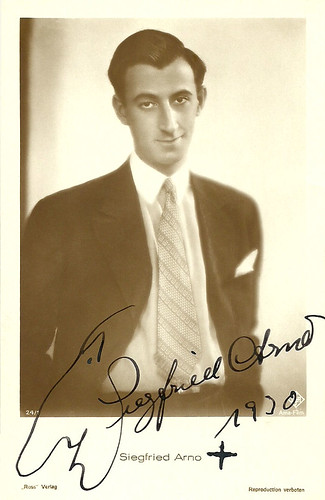
German postcard by Ross Verlag, no. 24/1. Photo: Ufa / Ama-Film. Collection: Didier Hanson.
Siegfried - or Sig - Arno (1895-1975) was regularly being referred to as the ‘German Charlie Chaplin’. The German-Jewish character actor appeared in ninety silent and early sound films before he had to flee Nazi-Germany. From 1939 on, he appeared as a supporting actor in over 50 Hollywood films, often as the ‘funny European’. He may be best remembered from The Palm Beach Story (Preston Sturges, 1942) as Toto, the nonsense-talking mustachioed man who hopelessly pursues Mary Astor's ‘Princess Centimillia’.

German postcard by Ross Verlag, no. 8811/1, 1933-1934. Photo: Atlantis-Film. Collection: Didier Hanson.
Czech soprano Jarmila Novotná (1907-1994) was one of the world-renowned opera luminaries of the 20th Century. Her film appearances were unfortunately few and far between.
Thanks, Didier!
This is a post for Postcard Friendship Friday, hosted by Beth at the The Best Hearts are Crunchy. You can visit her by clicking on the button below.


